|
___ (1997年掲載)
ロバート・パリー著 115 年前のペンドルトン法と、それがホワイトハウスからの資金集めの電話をカバーしているかどうかについての議論の中で、より不吉なマネー・イン・ポリティクスの問題が見過ごされ続けています。文鮮明師。クリントン政権は、文の莫大な富から利益を得たレーガン・ブッシュ政権ほど、文の神秘的な数百万の出所に関心を持っていないようだ。 私たちの最近のシリーズ「ムーン牧師の暗黒面」では、ムーンの組織がジョージ・ブッシュ元大統領や宗教右派の指導者ジェリー・ファルウェルなどの重要な政治家に秘密の支払いをして影響力を購入した方法を記録しました。文大統領はまた、ワシントン・タイムズなどの高価な報道機関に資金を提供しました。. 文大統領は、アメリカは「サタンの収穫物」であり、韓国を基盤とする神権政治の下でアメリカ国民を征服することを誓い、信者たちに語りかけながらも、このアメリカのネットワークを構築してきました。 このシリーズはまた、ムーンの組織が依然として疑わしい金融慣行に関与していることを明らかにしました。裁判所の記録によると、文の組織はマネーロンダリングを行い、資金を流用して、文の息子である孝進のコカインを含む、文の家族の個人的な贅沢品を購入しています。金銭的な巧妙な手口は、1982 年に文大統領が脱税で有罪判決を受けるきっかけとなった犯罪を思い起こさせます。 しかし、私たちの連載が始まって以来、文大統領の国際的な政治的つながりに関するより厄介な事実が私たちの注意を引いてきました. ムーンの自由な支出方法を考えると、最も気がかりなのは、アジアの組織犯罪やラテンアメリカの麻薬取引に関連する超右派との彼の長年の関係です。これらの協会と、南アメリカでの文大統領のビジネス活動の深化は、文大統領が米国の政治帝国にどのように資金を提供しているかを米国政府が正確に把握する必要があることを強調しています。 文大統領の代表者は、広範囲にわたる作戦をどのように維持しているかについて、公に詳細を明らかにすることを拒否している. しかし、彼らは、武器や麻薬の違法取引で利益を得ているという主張が繰り返されていることに怒って反論している。 アルゼンチンの新聞、クラリン による銃撃戦の質問に対する典型的な回答で、 、 文の代表リカルド・デセナは、「私はこれらの告発を断固として否定し、麻薬や洗脳について言われている野蛮さも否定します。私たちの運動は、人種、国家、宗教の調和に対応し、家族は愛の学校であることを宣言します。」[クラリン、1996 年 7 月 7 日] しかし、麻薬中毒の暴力団や腐敗した右翼政治家とのムーンの関係は、アジアにおける彼の統一教会の初期にまでさかのぼります。韓国に本拠を置くムーンの教会は、かつてイタリアの独裁者ベニート・ムッソリーニを「完璧なファシスト」と称賛した日本のヤクザ犯罪シンジケートのリーダーである笹川良一の支持を得た後、1960年代初頭に日本に最初の重要な進出を果たしました。日本と韓国では、影のヤクザが麻薬の密輸、ギャンブル、売春組織を運営していました。 笹川氏は日本の与党自民党の舞台裏のリーダーだったので、笹川氏とのつながりは文氏に改宗者と影響力の両方をもたらした. 国際舞台では、笹川はアジア人民反共産党同盟の創設を支援し、ヘロインに染まったナショナリスト中国の指導部と、韓国、日本、その他のアジアの右派とを結びつけました。[詳細については、David E. Kaplan と Alec Dubro による Yakuza を参照してください] 1966 年に、アジア リーグは、ヨーロッパからの元ナチス、米国からのあからさまな人種差別主義者、および「死の部隊」工作員を含む、世界反共産主義リーグに発展しました。ラテンアメリカから、より伝統的な保守派とともに。文の信奉者は両方の組織で重要な役割を果たし、 南アメリカの薬
一方、第二次世界大戦後、南アメリカはナチスの逃亡者と麻薬密輸業者の交差点になりつつありました。ナチスの戦争犯罪者クラウス・バービー、いわゆるリヨンの肉屋は、ボリビアで諜報技術を売って生計を立てていたが、他の元ナチスは麻薬密売を行っていた。多くの場合、線が交差しました。 当時、ゲシュタポに協力していたフランスの戦争犯罪人、オーギュスト・リコルがパラグアイに店を構えました。リコルドはフレンチ・コネクションのヘロインチャンネルをアメリカのマフィアの麻薬王サント・トラフィカンテ・ジュニアに開放した.彼はアメリカへのヘロインの流通の多くをコントロールしていた. ジャック・アンダーソンによるコラムは、リコードの共犯者がパラグアイの最高位の将校の一部であると特定した. 別のフレンチ・コネクションのギャング、クリスチャン・デビッドは、アルゼンチン当局の保護に頼っていました。ヘロインを人身売買している間、デビッドは「アルゼンチンのテロ組織、アルゼンチン反共産主義同盟の任務も引き受けた」と、ヘンリック・クルーガーはThe Great Heroin Coupに書いています。ニクソン大統領の「麻薬戦争」の間、米国当局はこの有名なフレンチ コネクションを粉砕し、1972 年にリコードとデビッドの身柄引き渡しを勝ち取りました 。マイアミの右翼反カストロ・キューバ人を含む他のトラフィカンテ関連グループは、麻薬の空白を熱心に埋めました。 この期間中、CIA は右翼の陸軍将校と積極的に協力して、左派の政府を追放しました。そして、この反共の渦の中で、ムーンは南米で活動を始めた。彼が初めてアルゼンチンを訪れたのは 1965 年で、ブエノスアイレスの大統領官邸ピンク ハウスの裏にある広場を祝福しました。彼は 10 年後に帰国し、アルゼンチン、チリ、パラグアイ、ボリビア、ウルグアイでハイレベルのコンタクトを取り始めました。 極右は、1976 年に何万人ものアルゼンチン人が「姿を消した」汚い戦争でアルゼンチンの支配権を獲得しました。麻薬取締局のスター覆面捜査官であるマイケル・レヴィーンは、ブエノスアイレスに配属され、「アルゼンチンでは死が非常に生き方であった」ことに衝撃を受けました。[レバインの大きな白い嘘を参照] ナチの再会
近隣のコカ生産地であるボリビアでは、ナチスの逃亡者クラウス・バービーがボリビアの諜報員として働いており、ボリビアの中央国家を地域の右翼政権の「安定軸」に加える計画を立てていた。バービーはアルゼンチンの諜報機関に助けを求めました。 最初に到着したアルゼンチンの情報将校の 1 人は、アルフレッド マリオ ミンゴラ中尉でした。「私たちが出発する前に、[バービー]に関する書類を受け取りました」とミンゴラは後にドイツの調査記者カイ・ヘルマンに語った. 「そこには、アルトマンが共産主義との戦いにおいてラテンアメリカ全体で重要な役割を果たしたため、アルゼンチンにとって非常に役に立ったと述べられていました。文書から、アルトマンがアメリカ人のために働いていたことも明らかでした。」[ヘルマンの詳細な説明の英訳については、秘密行動情報速報、1986 年冬] ボリビアのクーデターが形成されると、コカインの王者ロベルト・スアレスのいとこであるボリビアの大佐ルイス・アルセ・ゴメスは、アルゼンチンの死に協力していたイタリア人のステファノ・デッラ・キアイエなどのネオ・ファシストのテロリストを募集した。分隊。[ Peter Dale Scott と Jonathan Marshall によるCocaine Politicsを参照] 世界反共産主義同盟のボリビアの指導者である Alfredo Candia 博士は、アルゼンチンとヨーロッパからのこれらの準軍事工作員の到着を調整していたと、Hermann は報告した。その間、バービーはトゥーレと呼ばれる秘密のロッジを始めました。会議中、彼はろうそくの明かりで卍の下で信者に説教しました。 CIAがこの積極的な反共産主義をあるレベルで奨励している間、レバインと彼のDEAフィールドエージェントは、麻薬犯罪の共謀者の何人かに反対していました. 1980 年 5 月、マイアミの DEA は 854 ポンドのコカイン ベースを押収し、ロベルト スアレス組織のボリビア人のトップ 2 人を逮捕しました。しかし、Levine 氏は、地政学的な理由から胸像が裏切られているのを見たのではないかと疑っていました。 容疑者の 1 人であるホセ ロベルト ガッサーは、「マイアミの米国連邦検事局によってほぼ即座に拘留から解放された」とレバインは書いています。(ガッサーは、来たるクーデターの主要人物であるボリビアの WACL アソシエイト、アーウィン・ガッサーの息子でした。)もう 1 人の被告は、彼の保釈金が引き下げられるのを見て、彼を米国から逃亡させました。Levine さんは、DEA を支援したボリビア当局者の運命を心配していました。[レバインを参照]] 1980 年 6 月 17 日、クーデターのほぼ公的な計画の中で、ボリビアの最大の密売人 6 人が軍の共謀者と会い、コカイン取引の将来の保護のための金銭的取引を打ち出した。ラパスの実業家は、来たるべき反乱は「コカイン・クーデター」と呼ばれるべきだと述べた。[コカイン政治] それから 3 週間もたたない 7 月 6 日、DEA エージェントのレバインは、ヒューゴ ウルタド カンディアという名前のボリビア人密売人に会いました。フルタド氏は飲み物を飲みながら、コカインの主要供給者である姪のソニア・アタラ氏が「非常に強力な立場に立つ」「新政府」の計画を概説した。 その後、アルゼンチンの秘密警察がレバインに、CIAはクーデターを知っていたと語った。「あなたたち北米人は私を驚かせます。あなたはあなた自身の人々と話をしませんか?」警官は疑問に思いました。「ボリビアの政府、または南米の政府は、あなたの政府や私の政府が気付かないうちに変更できると思いますか?」 レバインが計画されたDEAの調査に影響を与えた理由を尋ねたとき、アルゼンチン人は答えた。 CIA.」[大きな白い嘘] コカイン・クーデターの到来
7月17日、コカイン・クーデターが始まり、バービーと彼のネオ・ファシスト・グーン・スクワッドがフィアンセズ・オブ・デスと呼ばれた. 「覆面をした凶悪犯はボリビア人ではありませんでした。彼らはドイツ語、フランス語、イタリア語のアクセントでスペイン語を話しました」とレバイン氏は書いています。「彼らの制服には、国籍も印もありませんでしたが、その多くはナチスの卍の腕章と記章を身につけていました。」 虐殺は激しかった。反乱分子が国の労働本部を襲撃したとき、元軍事独裁者のヒューゴ・バンザーを麻薬と汚職の容疑で起訴する努力を主導した労働党のリーダー、マルセロ・キロガを負傷させた。キロガは、「アルゼンチンの恐ろしい海軍工兵学校から派遣された拷問の専門家の何人かによってプレイされるゲームの対象となるために、警察本部に引きずり出された」とレバインは書いた。 「これらの専門家は、彼らの『科学』をキロガに適用し、ボリビア人への教訓として、そのような問題に少し遅れをとっていました。彼らはキロガを生かし、何時間も苦しんでいました。彼の去勢され、拷問された体は、数日後に「ザ・ザ・ラパス南部の月の谷」女性の捕虜は、拷問の一環として集団レイプされました。 ブエノスアイレスに戻ったレバインには、「革命の主な目的はボリビアのコカイン産業の保護と管理であることがすぐに明らかになりました。刑務所にいた主要な麻薬密売人はすべて釈放され、その後ネオナチの暴走に加わりました。政府の建物が侵略され、人身売買業者のファイルが持ち去られるか、燃やされました。政府職員は、民兵組織と解放された人身売買業者によって拷問され、撃たれ、女性は縛られ、繰り返しレイプされました。」 ファシストたちは卍と「ハイル・ヒトラー!」の叫びで祝った。ヘルマンは報告した。アルセ・ゴメス大佐は、太鼓腹のラテン系の独裁者の中心人物像であり、内務大臣として幅広い権力を掌握した。ルイス・ガルシア・メザ将軍がボリビアの新大統領に就任した。 ムーン&ザ・プシスト
新政府を祝福するためにラパスに最初に到着した希望者の中には、文大統領の最高副官である Bo Hi Pak がいた。ムン・オーガニゼーションは、朴大統領がガルシア・メザ将軍と会談している写真を公開した。山の首都を訪問した後、パクは「私は世界で最も高い都市に文神のために玉座を建てた」と宣言した. その後のボリビア政府と新聞の報道によると、文大統領の代表者はクーデターの準備に約400万ドルを投資した。ボリビアの WACL の代表も重要な役割を果たし、文大統領の反共産主義組織の 1 つである CAUSA は、ボリビアの主要なクーデターのほとんどすべてをメンバーとして挙げた。[ CAIB、1986年冬] クーデターの後、Arce-Gomez は、トラフィカンテのキューバ系アメリカ人密輸業者を含む大手麻薬密売人と協力関係を結びました。クラウス・バービーと彼のネオ・ファシストは、ボリビアの主要なコカイン男爵を保護し、国境に麻薬を輸送するという新しい任務を与えられました. [コカイン政治] 「バービーが新しいタイプの親衛隊として考案した準軍事組織は、コカイン男爵に身を売りました」とヘルマンは結論づけた。「コカイン取引におけるファストマネーの魅力は、ラテンアメリカにおける国家社会主義革命のアイデアよりも強かった.」 Levine によると、Arce-Gomez は 1 人のトップ密売人に自慢した: クーデターメーカーがバックアップしたのは自慢だった。 「ボリビアはすぐに、当時駆け出しだったコロンビアのカルテルへのコカインベースの主要な供給者となり、米国へのコカインの主要な供給者となった」とレバイン氏は述べた。「そして、DEA の暗黙の助けと CIA の積極的で秘密の助けがなければ、それはできなかったでしょう。」 1980 年 12 月 16 日、キューバ系アメリカ人の諜報員リカルド モラレスは、フロリダの検察官に、フランク カストロと他のピッグス湾の退役軍人が輸入の陰謀に関与していたことを示唆するマイアミを拠点とする捜査であるティックトーク作戦の情報提供者になったと語った。ボリビアの新しい軍事支配者からのコカイン。[コカイン政治] 数年後、メデジン カルテルのマネーロンダラー、ラモン ミリアン ロドリゲスは、ジョン ケリー上院議員が議長を務める上院公聴会で証言しました。[1988 年 4 月 6 日] 麻薬密売組織がボリビアで権力を強化するにつれて、文の組織もその存在感を拡大しました。ハーマンは、1981 年初頭、戦争犯罪者のバービーと月のリーダーであるトーマス・ウォードが一緒に祈りを捧げている様子がしばしば見られたと報告した。アルゼンチンの諜報員であるミンゴラは、ウォードを彼の CIA のペイマスターであり、ウォードの代理人の CAUSA オフィスから月額 1,500 ドルを受け取っていると述べた。[ CAIB、1986年冬] 1981 年 5 月 31 日、文の代表者は、ラパスのシェラトン ホテルの自由の殿堂で CAUSA レセプションを後援しました。Bo Hi Pak と Garcia Meza は、レーガン大統領の暗殺未遂からの回復を祈りました。Bo Hi Pak は演説の中で、「神は南アメリカの中心にいるボリビアの人々を、共産主義を征服する者として選ばれた」と宣言した。後のボリビアの諜報報告によると、文の組織はボリビア人の「武装教会」を募集しようとし、約7,000人のボリビア人が準軍事訓練を受けていた. コカインストレス
しかし、1981年後半までに、明らかなコカイン汚染が米国とボリビアの関係を緊張させていました. 「月の宗派は、彼らが到着したのと同じように秘密裏にボリビアから一夜のうちに姿を消した」とヘルマンは報告した. ボリビアの情報機関が民政への移行に取り組んでいる間、ワードと他の数人だけがボリビアの情報機関にとどまりました。 ハーマンの説明によると、ミンゴラは 1982 年 3 月にラパスのホテル プラザのカフェテリア フォンタナでウォードに会った。ウォードはボリビアでの作戦に落胆した。「アルトマン[バービー]との関係全体は、ファシズムとナチズムの一部であり、行き止まりの道でした」とウォードは不平を言いました. 「ムーンと CAUSA がここにいるのはばかげていた。」[ CAIB、1986 年冬] この記事についてウォードにコメントを求めることはできませんでした。 コカイン クーデターの指導者たちは、すぐに逃走を始めました。アルセゴメス内務大臣は最終的にマイアミに引き渡され、麻薬密売の罪で 30 年の刑に服している。ロベルト・スアレスは懲役15年。ガルシア・メサ将軍は、ボリビアで職権乱用、汚職、殺人の罪で 30 年の刑を言い渡された逃亡者です。バービーは戦争犯罪の終身刑に直面するためにフランスに返還されました. 彼は 1992 年に亡くなりました 。米国の保守的な政治会議に資金を提供し、1982 年に超保守派の ワシントン タイムズを設立したムーンは、レーガン大統領やその他の有力な共和党員に気に入られました。文大統領はまた、南米における政治経済基盤の構築を続けた。 1984年、ニューヨーク・タイムズは、ムーンの教会をウルグアイで「最大の外国人投資家の1つ」と呼び、過去3年間で約7000万ドルを投資した. 投資には、ウルグアイで 3 番目に大きい銀行である Banco de Credito が含まれます。モンテビデオのホテル ビクトリア プラザ。そして新聞、Ultimas Noticias。ムーンの冒険は、ウルグアイの軍事政権からの寛大な減税によって支援されました。「教会関係者は、国外への利益の本国送金を容易にする自由主義的な法律があるため、ウルグアイは特に魅力的であると述べた」とタイムズ紙は報じた。[NYT、2-16-84] ニカラグアのコントラ反逆者を支援するムーンの組織は、ニカラグア国境に沿ってコントラのベース キャンプを提供した強力なホンジュラス軍とも緊密な関係を築いた。繰り返しになりますが、ムーンの代理人は、米国へのコカインの出荷を支援した疑いのある警官と連絡を取り合っていました. マイアミの麻薬ネットワークにつながりのある反カストロ・キューバ人も、アルゼンチン軍の諜報員と同様に、反共産主義の大義を推進するために現場に現れました。 ホンジュラス・コネクション
ケリーの上院報告書は、ホンジュラスが北に向かうコカイン輸送の重要な中継地になったと結論づけた. 「ホンジュラス軍の一部は、1980年から麻薬密売人の保護に関与していた」と報告書は述べている. 「これらの活動は、期間中、適切な米国政府当局者に報告されました。国内でのDEAの存在を強化し、米国がホンジュラス人に拡大していた外国の援助をてことして使用することにより、麻薬密売を閉鎖するために断固として行動する代わりに、米国はテグシガルパの DEA 事務所を閉鎖し、この問題を無視したようです。」[麻薬、法執行、外交政策 -- ケリー報告 -- 1988 年 12 月] 1980 年代半ば、ジャーナリストと議会の捜査官が反対に関連した麻薬密売の証拠を調査し始めたとき、彼らは文のワシントン タイムズからの厳しい攻撃に遭遇しました。私がブライアン・バーガーと共同執筆したAP通信の記事は、タイムズの一 面で「政治的策略」として非難されました。[1986 年 4 月 11 日] タイムズ紙はケリーの捜査官を金の無駄使いで最初に攻撃した [8月 11 日] 。1986 年 1 月 13 日]、そして正義を妨害する [1 月 13 日]。21、1987]。今、南アメリカの薬物に汚染された当局者とのムーンの歴史的な関係のより明確な絵で、これらの調査の嫌がらせは、自己防衛の可能性のある別の形をとっています. [詳細については、「Dark Side of Rev. Moon」シリーズを参照してください。] ごく最近、ムーンは活動の拠点をウルグアイの豪華な不動産に移し、南米の資産を拡大し続けました。彼は、主要な密輸センターとして知られているパラグアイに近い国境地帯であるアルゼンチンのコリエンテス州に多額の投資を行ってきました。 1996 年 1 月 2 日の信者への説教で、文大統領は南米の僻地に小さな滑走路の建設を開始する計画と、潜水艦が沿岸警備隊のパトロールを回避するための基地を建設する計画を発表しました。飛行場プロジェクトは観光用であると述べ、「近い将来、世界中に多くの小さな空港ができるようになるだろう」と付け加えた. 潜水艦が必要だったのは、「世界中で国境による制限が非常に多い」からだと彼は語った。 彼の歴史と著名さから、ムーンと彼の組織は、米国政府の精査の自然な魅力のように思われる. しかし、文大統領は、あまりにも多くの有力なアメリカの政治家を買収することで、侵入捜査に対する保険を購入した可能性があるため、ワシントンの権力センターは、彼以上に精査する余裕がありません。~ ___ Dark Side of Rev. Moon (Cont.): Drug Allies
(Posted in 1997)
By Robert Parry Amid debates over the 115-year-old Pendleton Act and whether it covers fund-raising phone calls from the White House, a more sinister money-in-politics issue continues to go unnoticed: the vast political influence-buying operation of the Rev. Sun Myung Moon. The Clinton administration appears no more interested in where Moon's mysterious millions originate than was the Reagan-Bush administrations which benefited from Moon's largesse. Our recent series, "Dark Side of Rev. Moon," documented how Moon's organization purchased influence through secret payments to key political figures, including former President George Bush and Religious Right leader Jerry Falwell. Moon also financed costly media outlets, such as The Washington Times. Moon has built this U.S. network even as he tells his followers that America is "Satan's harvest" and vows to subjugate the American people under a Korea-based theocracy. The series also revealed that Moon's organization still engages in questionable financial practices. According to court records, the Moon organization has been laundering money and diverting funds to buy personal luxuries for Moon's family, including cocaine for Moon's son, Hyo Jin. The financial sleights-of-hand are reminiscent of offenses that led to Moon's conviction for tax evasion in 1982. But since our series ran, more troubling facts about Moon's international political connections have been brought to our attention. Most disturbing, given Moon's free-spending ways, are his long-standing ties to ultra-rightists linked to Asian organized crime and to the Latin American drug trade. These associations -- and Moon's deepening business operations in South America -- underscore the need for the U.S. government to ascertain exactly how Moon is financing his U.S. political empire. Moon's representatives refuse to detail publicly how they sustain their far-flung operations. But they angrily rebut recurring allegations about profiteering off illegal trafficking in weapons and drugs. In a typical response to a gun-running question by the Argentine newspaper, Clarin, Moon's representative Ricardo DeSena responded, "I deny categorically these accusations and also the barbarities that are said about drugs and brainwashing. Our movement responds to the harmony of the races, nations and religions and proclaims that the family is the school of love." [Clarin, July 7, 1996] But Moon's relationships with drug-tainted gangsters and corrupt right-wing politicians go back to the early days of his Unification Church in Asia. Moon's Korea-based church made its first important inroads in Japan in the early 1960s after gaining the support of Ryoichi Sasakawa, a leader of the Japanese yakuza crime syndicate who once hailed Italian dictator Benito Mussolini as "the perfect fascist." In Japan and Korea, the shadowy yakuza ran lucrative drug smuggling, gambling and prostitution rings. The Sasakawa connection brought Moon both converts and clout because Sasakawa was a behind-the-scenes leader of Japan's ruling Liberal Democratic Party. On the international scene, Sasakawa helped found the Asian People's Anti-Communist League, which united the heroin-stained leadership of Nationalist China with rightists from Korea, Japan and elsewhere in Asia. [For details, see Yakuza by David E. Kaplan and Alec Dubro] In 1966, the Asian league evolved into the World Anti-Communist League with the inclusion of former Nazis from Europe, overt racialists from the United States and "death squad" operatives from Latin America, along with more traditional conservatives. Moon's followers played important roles in both organizations, which also maintained close ties to the CIA. South American Drugs
Meanwhile, after World War II, South America was becoming a crossroads for Nazi fugitives and drug smugglers. Nazi war criminal Klaus Barbie, the so-called Butcher of Lyons, earned his living in Bolivia by selling his intelligence skills, while other ex-Nazis trafficked in narcotics. Often the lines crossed. In those years, Auguste Ricord, a French war criminal who had collaborated with the Gestapo, set up shop in Paraguay. Ricord opened up French Connection heroin channels to American Mafia drug kingpin Santo Trafficante Jr., who controlled much of the heroin traffic into the United States. Columns by Jack Anderson identified, Ricord's accomplices as some of Paraguay's highest-ranking officers. Another French Connection mobster, Christian David, relied on protection of Argentine authorities. While trafficking in heroin, David also "took on assignments for Argentina's terrorist organization, the Argentine Anti-Communist Alliance," Henrik Kruger wrote in The Great Heroin Coup. During President Nixon's "war on drugs," U.S. authorities smashed this famous French Connection and won extraditions of Ricord and David in 1972. But by then, powerful drug lords had forged strong ties to South America's military leaders. Other Trafficante-connected groups, including right-wing anti-Castro Cubans in Miami, eagerly filled the drug void. Heroin from the Golden Triangle of Southeast Asia quickly replaced the French Connection heroin that had come mostly from the Middle East. During this period, the CIA actively collaborated with right-wing army officers to oust left-leaning governments. And amid this swirl of anti-communism, Moon became active in South America. His first visit to Argentina was in 1965 when he blessed a square behind the presidential Pink House in Buenos Aires. He returned a decade later and began making high-level contacts in Argentina, Chile, Paraguay, Bolivia and Uruguay. The far-right gained control of Argentina in 1976 with a Dirty War that "disappeared" tens of thousands of Argentines. Michael Levine, a star undercover agent of the Drug Enforcement Administration, was assigned to Buenos Aires and was struck how "death was very much a way of life in Argentina." [See Levine's Big White Lie] A Nazi Reunion
In nearby coca-producing Bolivia, Nazi fugitive Klaus Barbie was working as a Bolivian intelligence officer and drawing up plans for a putsch that would add that central nation to the region's "stable axis" of right-wing regimes. Barbie contacted Argentine intelligence for help. One of the first Argentine intelligence officers who arrived was Lt. Alfred Mario Mingolla. "Before our departure, we received a dossier on [Barbie]," Mingolla later told German investigative reporter Kai Hermann. "There it stated that he was of great use to Argentina because he played an important role in all of Latin America in the fight against communism. From the dossier, it was also clear that Altmann worked for the Americans." [For an English translation of Hermann's detailed account, see Covert Action Information Bulletin, Winter 1986] As the Bolivian coup took shape, Bolivian Col. Luis Arce-Gomez, the cousin of cocaine kingpin Roberto Suarez, recruited neo-fascist terrorists such as Italian Stefano della Chiaie who had been working with the Argentine death squads. [See Cocaine Politics by Peter Dale Scott and Jonathan Marshall] Dr. Alfredo Candia, the Bolivian leader of the World Anti-Communist League, was coordinating the arrival of these paramilitary operatives from Argentina and Europe, Hermann reported. Meanwhile, Barbie started a secret lodge, called Thule. During meetings, he lectured to his followers underneath swastikas by candlelight. While the CIA was encouraging this aggressive anti-communism on one level, Levine and his DEA field agents were moving against some of the conspirators for drug crimes. In May 1980, DEA in Miami seized 854 pounds of cocaine base and arrested two top Bolivian traffickers from the Roberto Suarez organization. But Levine saw the bust double-crossed, he suspected, for geo-political reasons. One suspect, Jose Roberto Gasser "was almost immediately released from custody by the Miami U.S. attorney's office," Levine wrote. (Gasser was the son of Bolivian WACL associate Erwin Gasser, a leading figure in the upcoming coup.) The other defendant saw his bail lowered, letting him flee the United States. Levine worried about the fate of Bolivian officials who had helped DEA. [See Levine's Deep Cover] On June 17, 1980, in nearly public planning for the coup, six of Bolivia's biggest traffickers met with the military conspirators to hammer out a financial deal for future protection of the cocaine trade. A La Paz businessman said the coming putsch should be called the "Cocaine Coup," a name that would stick. [Cocaine Politics] Less than three weeks later, on July 6, DEA agent Levine met with a Bolivian trafficker named Hugo Hurtado-Candia. Over drinks, Hurtado outlined plans for the "new government" in which his niece Sonia Atala, a major cocaine supplier, will "be in a very strong position." Later, an Argentine secret policeman told Levine that the CIA knew about the coup. "You North Americans amaze me. Don't you speak to your own people?" the officer wondered. "Do you think Bolivia's government -- or any government in South America -- can be changed without your government and mine being aware of it?" When Levine asked why that affected the planned DEA investigation, the Argentine answered, "Because the same people he's naming as drug dealers are the people we are helping to rid Bolivia of leftists. ...Us. The Argentines ... working with your CIA." [Big White Lie] The Cocaine Coup Cometh
On July 17, the Cocaine Coup began, spearheaded by Barbie and his neo-fascist goon squad dubbed Fiances of Death. "The masked thugs were not Bolivians; they spoke Spanish with German, French and Italian accents," Levine wrote. "Their uniforms bore neither national identification nor any markings, although many of them wore Nazi swastika armbands and insignias." The slaughter was fierce. When the putschists stormed the national labor headquarters, they wounded labor leader Marcelo Quiroga, who had led the effort to indict former military dictator Hugo Banzer on drug and corruption charges. Quiroga "was dragged off to police headquarters to be the object of a game played by some of the torture experts imported from Argentina's dreaded Mechanic School of the Navy," Levine wrote. "These experts applied their 'science' to Quiroga as a lesson to the Bolivians, who were a little backward in such matters. They kept Quiroga alive and suffering for hours. His castrated, tortured body was found days later in a place called 'The valley of the Moon' in southern La Paz." Women captives were gang-raped as part of their torture. To Levine back in Buenos Aires, it was soon clear "that the primary goal of the revolution was the protection and control of Bolivia's cocaine industry. All major drug traffickers in prison were released, after which they joined the neo-Nazis in their rampage. Government buildings were invaded and trafficker files were either carried off or burned. Government employees were tortured and shot, the women tied and repeatedly raped by the paramilitaries and the freed traffickers." The fascists celebrated with swastikas and shouts of "Heil Hitler!" Hermann reported. Col. Arce-Gomez, a central-casting image of a bemedaled, pot-bellied Latin dictator, grabbed broad powers as Interior Minister. Gen. Luis Garcia Meza was installed as Bolivia's new president. Moon & the Putschists
Among the first well-wishers arriving in La Paz to congratulate the new government was Moon's top lieutenant, Bo Hi Pak. The Moon organization published a photo of Pak meeting with Gen. Garcia Meza. After the visit to the mountainous capital, Pak declared, "I have erected a throne for Father Moon in the world's highest city." According to later Bolivian government and newspaper reports, a Moon representative invested about $4 million in preparations for the coup. Bolivia's WACL representatives also played key roles, and CAUSA, one of Moon's anti-communist organizations, listed as members nearly all the leading Bolivian coup-makers. [CAIB, Winter 1986] After the coup, Arce-Gomez went into partnership with big narco-traffickers, including Trafficante's Cuban-American smugglers. Klaus Barbie and his neo-fascists got a new assignment: protecting Bolivia's major cocaine barons and transporting drugs to the border. [Cocaine Politics] "The paramilitary units -- conceived by Barbie as a new type of SS -- sold themselves to the cocaine barons," concluded Hermann. "The attraction of fast money in the cocaine trade was stronger than the idea of a national socialist revolution in Latin America." According to Levine, Arce-Gomez boasted to one top trafficker: "We will flood America's borders with cocaine." It was boast that the coup-makers backed up. "Bolivia soon became the principal supplier of cocaine base to the then fledgling Colombian cartels, making themselves the main suppliers of cocaine to the United States," Levine said. "And it could not have been done without the tacit help of DEA and the active, covert help of the CIA." On Dec. 16, 1980, Cuban-American intelligence operative Ricardo Morales told a Florida prosecutor that he had become an informer in Operation Tick-Talks, a Miami-based investigation that implicated Frank Castro and other Bay of Pigs veterans in a conspiracy to import cocaine from the new military rulers of Bolivia. [Cocaine Politics] Years later, Medellin cartel money-launderer Ramon Milian Rodriguez testified before Senate hearings chaired by Sen. John Kerry, D-Mass. Milian Rodriguez stated that in the early days of the cartel, "Bolivia was much more significant than the other countries." [April 6, 1988] As the drug lords consolidated their power in Bolivia, the Moon organization expanded its presence, too. Hermann reported that in early 1981, war criminal Barbie and Moon leader Thomas Ward were often seen together in apparent prayer. Mingolla, the Argentine intelligence officer, described Ward as his CIA paymaster, with the $1,500 monthly salary coming from the CAUSA office of Ward's representative. [CAIB, Winter 1986] On May 31, 1981, Moon representatives sponsored a CAUSA reception at the Sheraton Hotel's Hall of Freedom in La Paz. Bo Hi Pak and Garcia Meza led a prayer for President Reagan's recovery from an assassination attempt. In his speech, Bo Hi Pak declared, "God had chosen the Bolivian people in the heart of South America as the ones to conquer communism." According to a later Bolivian intelligence report, the Moon organization sought to recruit an "armed church" of Bolivians, with about 7,000 Bolivians receiving some paramilitary training. Cocaine Stresses
But by late 1981, the obvious cocaine taint was straining U.S.-Bolivian relations. "The Moon sect disappeared overnight from Bolivia as clandestinely as they had arrived," Hermann reported. Only Ward and a couple of others stayed on with the Bolivian information agency as it worked on a transition back to civilian rule. According to Hermann's account, Mingolla met Ward in the cafeteria Fontana of La Paz's Hotel Plaza in March 1982. Ward was discouraged about the Bolivian operation. "The whole affair with Altmann [Barbie], with the whole fascism and Nazism bit, that was a dead-end street," Ward complained. "It was stupid having Moon and CAUSA here." [CAIB, Winter 1986] Ward could not be reached for comment about this article. The Cocaine Coup leaders soon found themselves on the run. Interior Minister Arce-Gomez was eventually extradited to Miami and is serving a 30-year sentence for drug trafficking. Roberto Suarez got a 15-year prison sentence. Gen. Garcia Meza is a fugitive from a 30-year sentence imposed on him in Bolivia for abuse of power, corruption and murder. Barbie was returned to France to face a life sentence for war crimes. He died in 1992. But Moon's organization paid little price for the Cocaine Coup. Funding U.S. conservative political conferences and founding the ultra-conservative Washington Times in 1982, Moon ingratiated himself to President Reagan and other leading Republicans. Moon also continued to build a political-economic base in South America. In 1984, The New York Times called Moon's church "one of the largest foreign investors" in Uruguay, having invested some $70 million in the three preceding years. Investments included Uruguay's third largest bank, the Banco de Credito; the Hotel Victoria Plaza in Montevideo; and the newspaper, Ultimas Noticias. Moon's venture were aided by generous tax breaks from Uruguay's military government. "Church officials said Uruguay was especially attractive because of liberal laws that allow easy repatriation of profits abroad," the Times reported. [NYT, 2-16-84] Supporting the Nicaraguan contra rebels, Moon's organization developed close ties, too, with the powerful Honduran military which gave the contras base camps along the Nicaraguan border. Again, Moon's representatives were in contact with officers suspected of supporting the shipment of cocaine into the United States. Anti-Castro Cubans linked to the Miami drug networks also appeared on the scene to advance the anti-communist cause as did intelligence officers from the Argentine military. The Honduran Connection
Kerry's Senate report concluded that Honduras became an important way station for cocaine shipments heading north. "Elements of the Honduran military were involved ... in the protection of drug traffickers from 1980 on," the report stated. "These activities were reported to appropriate U.S. government officials throughout the period. Instead of moving decisively to close down the drug trafficking by stepping up the DEA presence in the country and using the foreign assistance the United States was extending to the Hondurans as a lever, the United States closed the DEA office in Tegucigalpa and appears to have ignored the issue." [Drug, Law Enforcement and Foreign Policy -- the Kerry Report -- December 1988] In the mid-1980s, when journalists and congressional investigators began probing the evidence of contra-connected drug trafficking, they encountered harsh attacks from Moon's Washington Times. An Associated Press story that I co-wrote with Brian Barger was denounced on the Times' front page as a "political ploy." [April 11, 1986] The Times attacked Kerry's investigators first for wasting money [Aug. 13, 1986] and then with obstructing justice [Jan. 21, 1987]. Now, with a clearer picture of Moon's historic ties to drug-tainted officials in South America, the harassment of these investigations takes on a different appearance, of possible self-protection. [See our "Dark Side of Rev. Moon" series for more details.] More recently, Moon has shifted his base of operation to a luxurious estate in Uruguay and continued to expand his South American holdings. He has invested heavily in the Argentine province of Corrientes, a border area near Paraguay that is known as a major smuggling center. In a sermon to his followers on Jan. 2, 1996, Moon announced plans to begin building small airstrips in remote areas of South America as well as bases for submarines to evade Coast Guard patrols. Saying the airfield project would be for tourism, he added that "in the near future, we will have many small airports throughout the world." The submarines, he said, were needed because "there are so many restrictions due to national boundaries worldwide." With his history and prominence, Moon and his organization would seem a natural attraction for U.S. government scrutiny. But Moon may have purchased insurance against any intrusive investigation by buying so many powerful American politicians that Washington's power centers can no more afford the scrutiny than he can. ~ (c) Copyright 1997
|
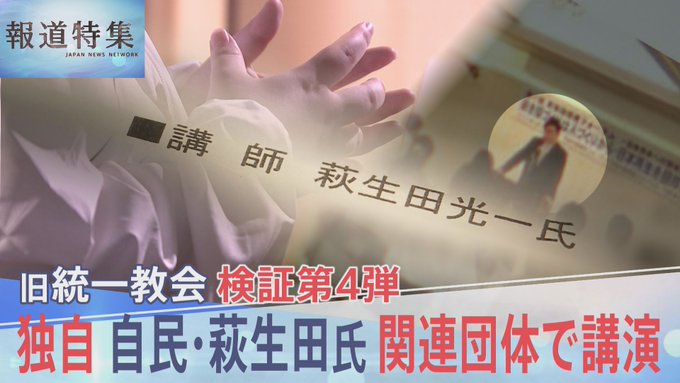
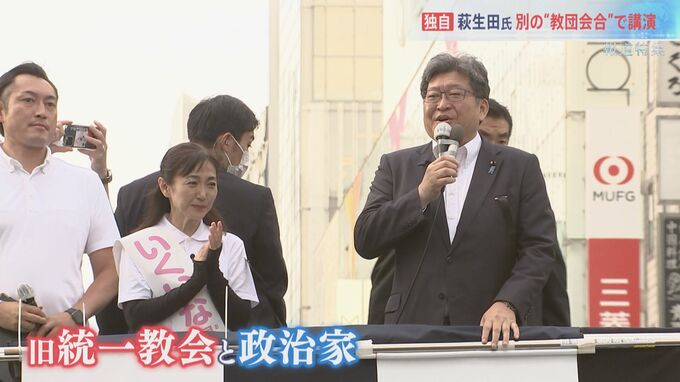
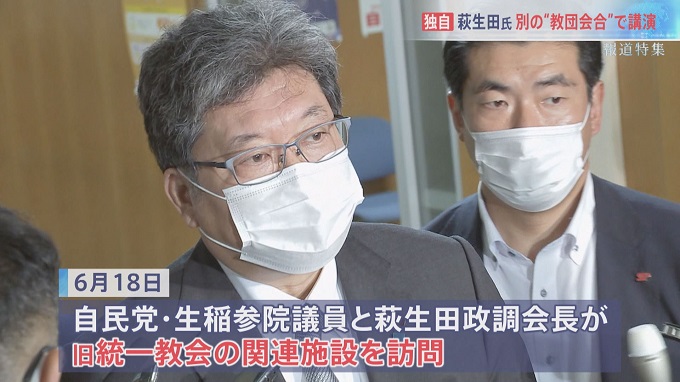
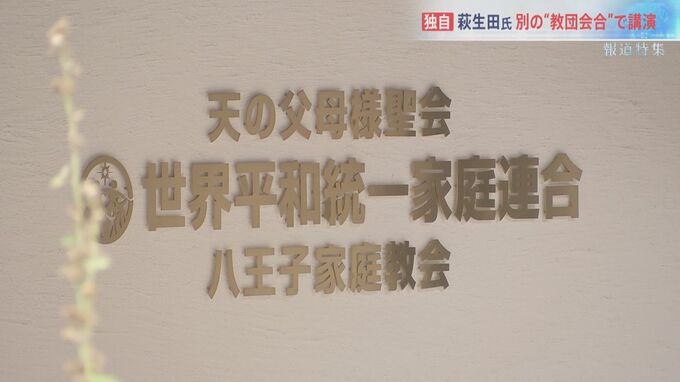
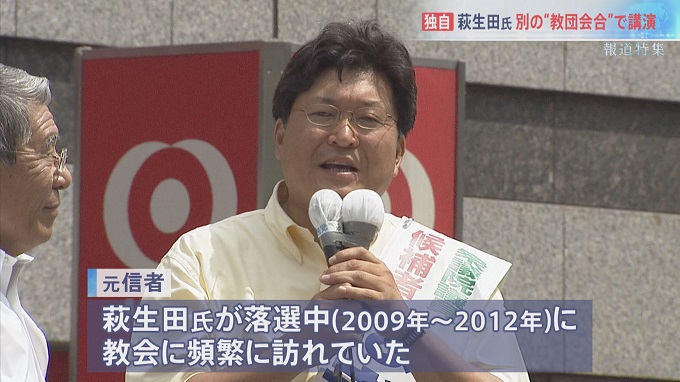
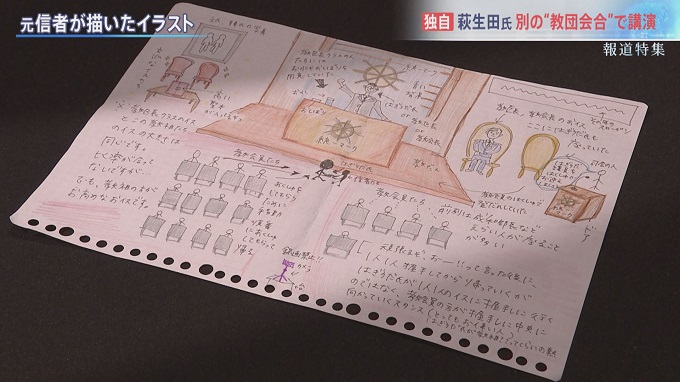
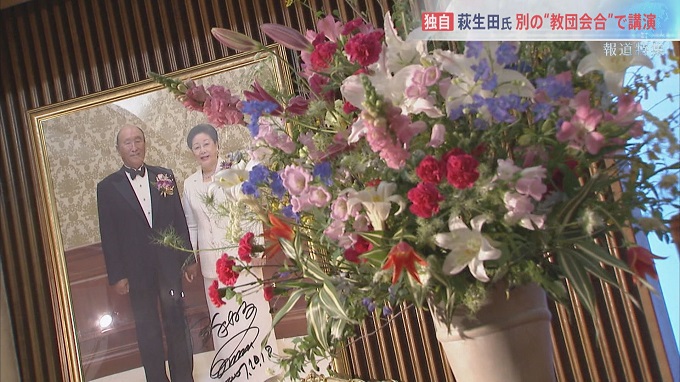
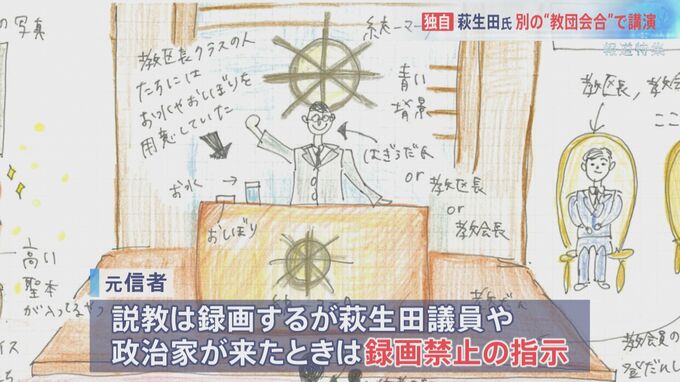
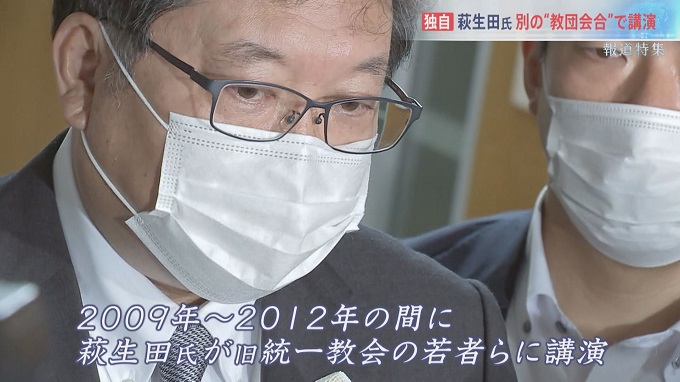

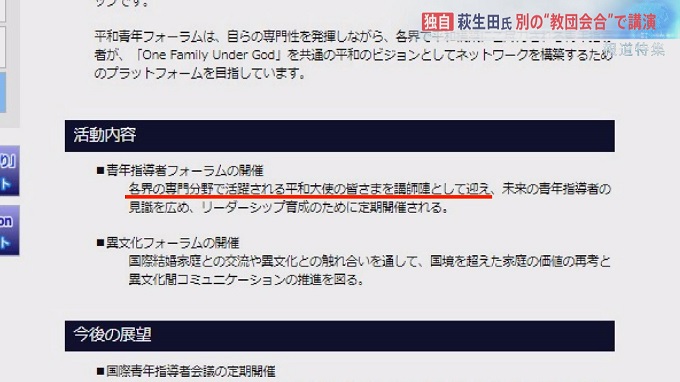
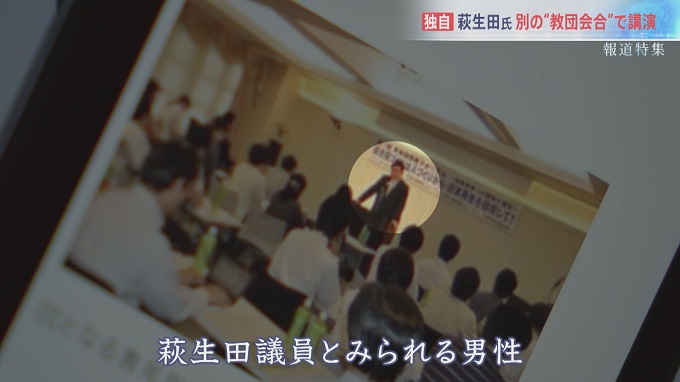
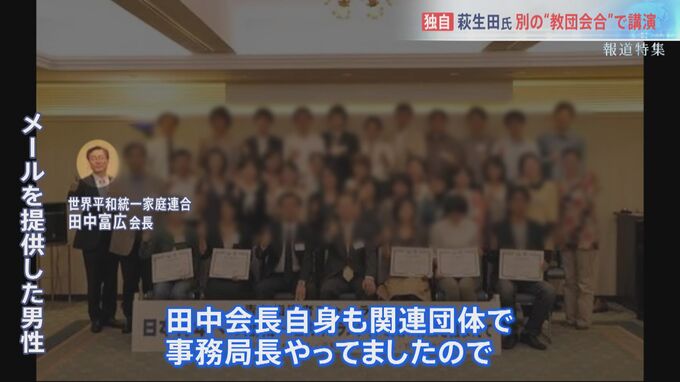
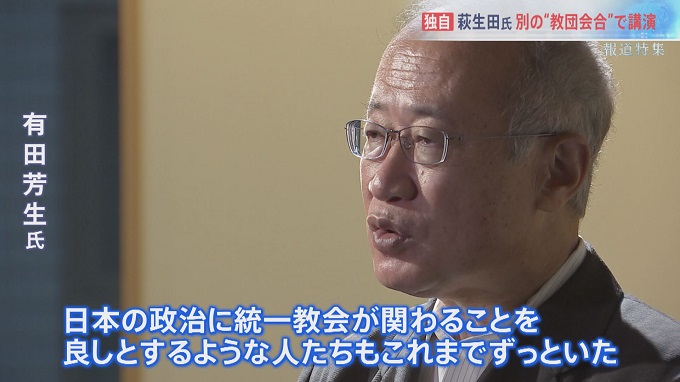
 スパムメールの中から見つけ出すためにメールのタイトルには必ず「阿修羅さんへ」と記述してください。
スパムメールの中から見つけ出すためにメールのタイトルには必ず「阿修羅さんへ」と記述してください。